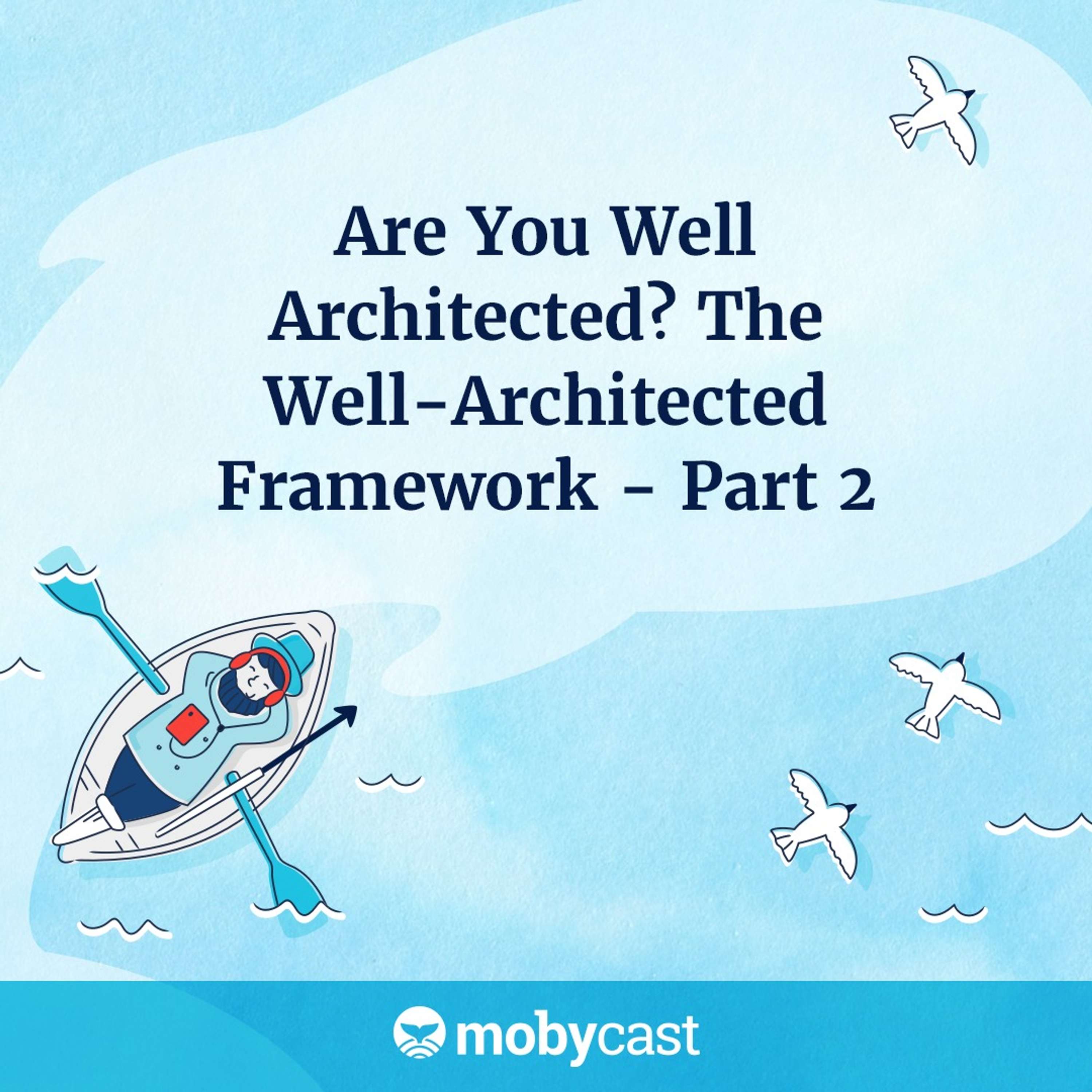

Are You Well Architected? The Well-Architected Framework - Part 2
In this episode, we cover the following topics:
- Pillars in depth
- Security
- "Ability to protect information, systems, and assets while delivering business value through risk assessments and mitigation strategies"
- Design principles
- Implement strong identity foundation
- Enable traceability
- Security at all layers
- Automate security best practices
- Protect data in transit and at rest
- Keep people away from data
- Prepare for security events
- Key service: AWS IAM
- Focus areas
- Identity and access management
- Services: IAM, AWS Organizations, MFA
- Detective controls
- Services: CloudTrail, CloudWatch, AWS Config, GuardDuty
- Infrastructure protection
- Services: VPC, Shield, WAF
- Data protection
- Services: KMS, ELB (encryption), Macie (detect sensitive data)
- Incident response
- Services: IAM, CloudFormation
- Identity and access management
- Best practices
- Identity and access management
- AWS Cognito
- Act as broker between login providers
- Securely access any AWS service from mobile device
- AWS Cognito
- Data protection
- Encrypt
- Encryption at rest
- Encryption in transit
- Encrypted backups
- Versioning
- Storage resiliency
- Detailed logging
- Encrypt
- Incident response
- Employ strategy of templated "clean rooms"
- Create new trusted environment to conduct investigation
- Use CloudFormation to easily create the "clean room" environment
- Employ strategy of templated "clean rooms"
- Identity and access management
- Reliability
- "Ability to recover from failures, dynamically acquire resources to meet demand and mitigate disruptions such as network issues"
- Design principles
- Test recovery procedures
- Auto recover from failures
- Scale horizontally to increase availability
- Stop guessing capacity
- Manage change with automation
- Key service: CloudWatch
- Focus areas
- Foundations
- Services: IAM, VPC, Trusted Advisor (visibility into service limits), Shield (protect from DDoS)
- Change management
- Services: CloudTrail, AWS Config, CloudWatch, Auto Scaling
- Failure management
- Services: CloudFormation, S3, Glacier, KMS
- Foundations
- Best practices
- Foundations
- Take into account physical and service limits
- High availability
- No single points of failure (SPOF)
- Multi-AZ design
- Load balancing
- Auto scaling
- Redundant connectivity
- Software resilience
- Failure management
- Backup and disaster recovery
- RPO, RTO
- Inject failures to test resiliency
- Backup and disaster recovery
- Foundations
- Key points
- Plan network topology
- Manage your AWS service and rate limits
- Monitor your system
- Automate responses to demand
- Backup
- Security
- In the next episode, we'll cover the remaining 2 pillars and discuss how to perform a Well-Architected Review.
Links
- AWS Well-Architected
- AWS Well-Architected Framework - Online/HTML version
- includes drill down pages for each review question, with recommended action items to address that issue
- AWS re:Invent 2018: How AWS Minimizes the Blast Radius of Failures - ARC338
- Shuffle Sharding: Massive and Magical Fault Isolation
Whitepapers
- AWS Well-Architected Framework
- Operational Excellence Pillar
- Security Pillar
- Reliability Pillar
- Performance-Efficiency Pillar
- Cost Optimization Pillar
End song:
The Runner (David Last Remix) - Fax
For a full transcription of this episode, please visit the episode webpage.
We'd love to hear from you! You can reach us at:
- Web: https://mobycast.fm
- Voicemail: 844-818-0993
- Email: ask@mobycast.fm
- Twitter: https://twitter.com/hashtag/mobycast
Activity